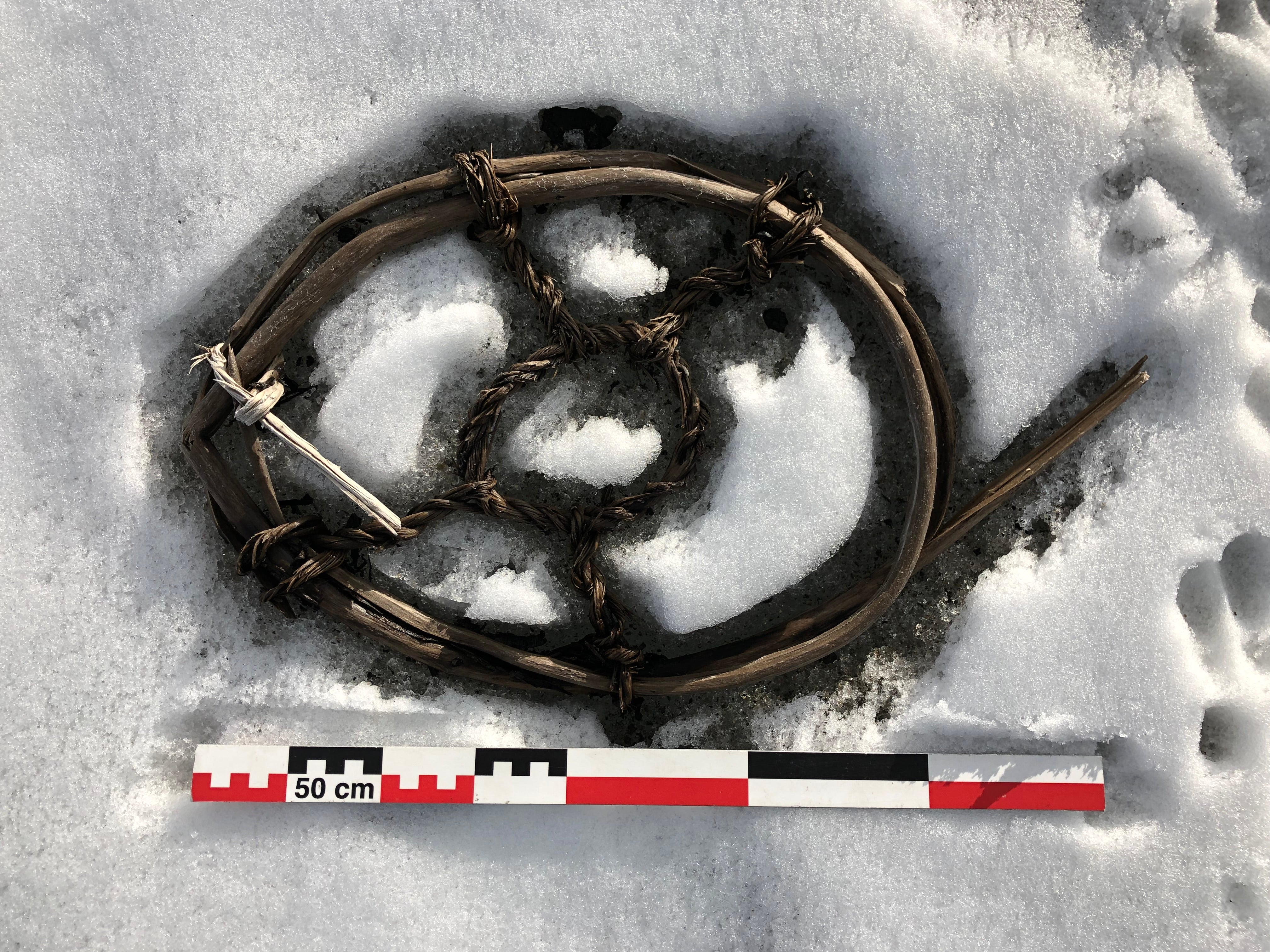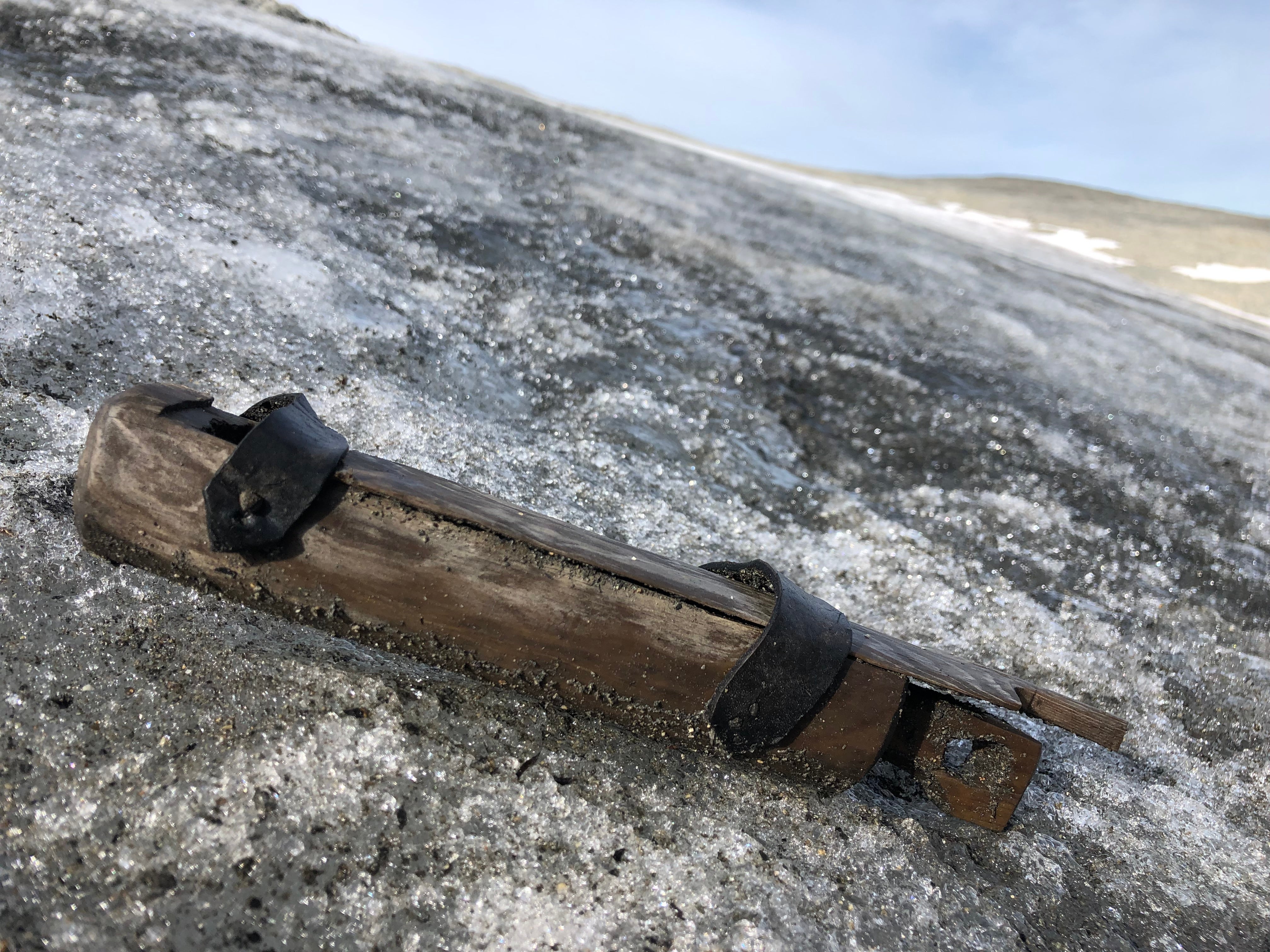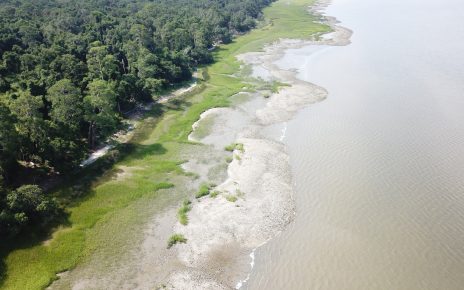The mountains northwest of Oslo are some of Europe’s highest, and they are covered with snow throughout the year. Norwegians call them the Jotunheimen, meaning the home of the jötnar—the giants of Norse mythology.
But years of warm weather have now melted much of that snow and ice, revealing a mountain pass that mere mortals traversed for more than 1,000 years—and then abandoned about 500 years ago. Archaeologists working along the ancient, high-altitude route have discovered hundreds of artifacts that indicate people used it to cross a mountain ridge from the late Roman Iron Age and through the medieval period. But it fell into disuse, perhaps because of worsening weather and economic changes—with the latter possibly brought about by the devastating plague of the mid-1300s.
Researchers say the pass, which crosses the Lendbreen ice patch near the alpine village of Lom, was once a cold-weather route for farmers, hunters, travelers and traders. It was mainly used in late winter and early summer, when several feet of snow covered the rough terrain.
A few modern roads go through neighboring mountain valleys, but the winter pathway over Lendbreen had been forgotten. The four-mile route, which reaches an altitude of more than 6,000 feet, is now marked only by ancient cairns, piles of reindeer antlers and bones, and the foundations of a stone shelter. An artifact found in 2011 led to the lost path’s rediscovery, and research published on Wednesday in Antiquity details its unique archaeology.
Years of combing the pass’s ice and snow have uncovered more than 800 artifacts, including shoes, pieces of rope, parts of an ancient wooden ski, arrows, a knife, horseshoes, horse bones and a broken walking stick with a runic inscription thought to say “Owned by Joar”—a Nordic name. “The travelers lost or discarded a wide variety of objects, so you never know what you are going to find,” says archaeologist Lars Pilø, co-director of the Secrets of the Ice Glacier Archaeology Program, a collaboration between Norway’s Innlandet County Council and the University of Oslo’s Museum of Cultural History. Some of these items, such as a Viking mitten and the remains of an ancient sled, have not been found anywhere else.
Many of them look as if they were lost only a short time ago. “The glacial ice works like a time machine, preserving the objects over centuries or millennia,” Pilø says. These items include Norway’s oldest garment: an astonishingly well-preserved woolen tunic made during the late Roman Iron Age. “I keep wondering what happened to the owner,” Pilø adds. “Is he still inside the ice?”

About 60 artifacts have been radiocarbon dated, showing the Lendbreen pass was widely used from at least A.D. 300. “It probably served as both an artery for long-distance travel and for local travel between permanent farms in the valleys to summer farms higher in the mountains, where livestock grazed for part of the year,” says University of Cambridge archaeologist James Barrett, a co-author of the research.
Foot and packhorse traffic through the pass peaked around A.D. 1000, in the Viking Age, when mobility and trade were at a height in Europe, the researchers write. Mountain products, including furs and reindeer pelts, could have been popular with distant consumers, while dairy products such as butter or winter fodder for livestock could have been traded for local use.
But the pass began to be frequented less in the centuries that followed, perhaps because of economic and environmental changes. Among them was the Little Ice Age, a cooling period that may have worsened the weather and brought more snow in the early 1300s. Another factor could have been the Black Death, a plague that killed tens of millions of people in the middle of the same century. “The pandemics inflicted a heavy toll on the local population. And when the area eventually recovered, things had changed,” Pilø says. “The Lendbreen pass went out of use and was forgotten.”

Glacial archaeologist James Dixon of the University of New Mexico, who was not involved in the new research, is struck by evidence of animal herding found at the Lendbreen pass, such as the wooden tongs apparently used to hold fodder on a sled or wagon. “Most ice-patch sites document hunting activities and don’t contain these types of artifacts,” he says. Such pastoral objects hint at the links between Norway’s alpine regions and the rest of northern Europe during times of economic and ecological changes, he adds.
Recent decades of warming weather have exposed hidden archaeology in many mountain and subpolar regions, from Europe’s Alps and Greenland to South America’s Andes. Barrett notes there is only limited time before artifacts exposed by the melting ice start to decay in the light and wind. “The Lendbreen pass has probably now revealed most of its finds, but other sites are still melting or even only now being discovered,” he says. “The challenge will be to rescue all of this archaeology.”



